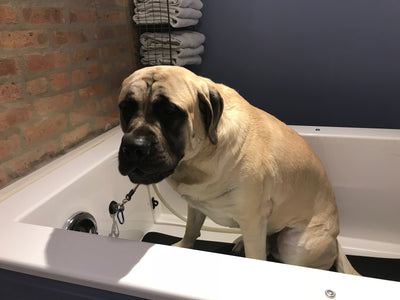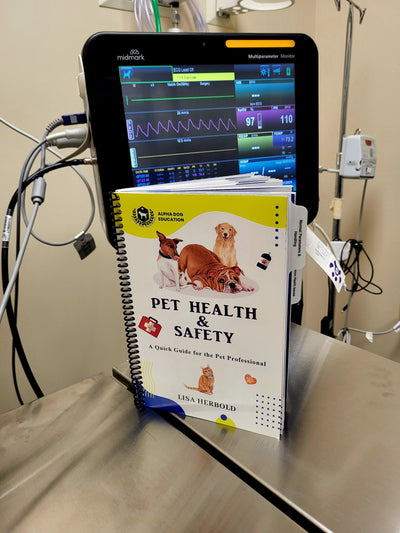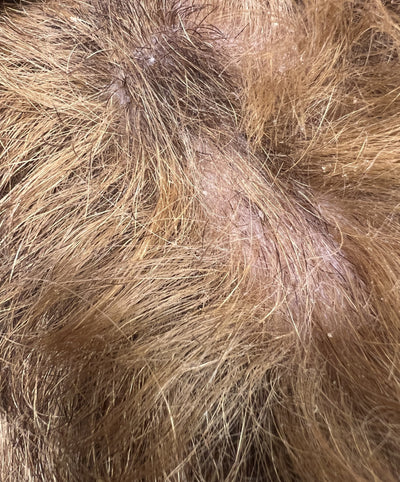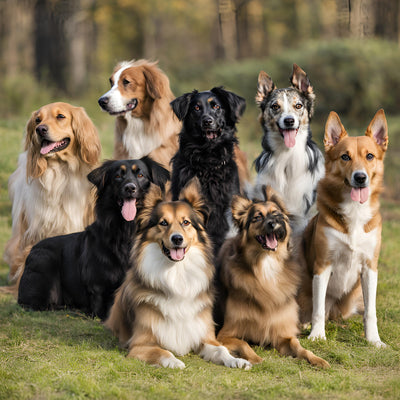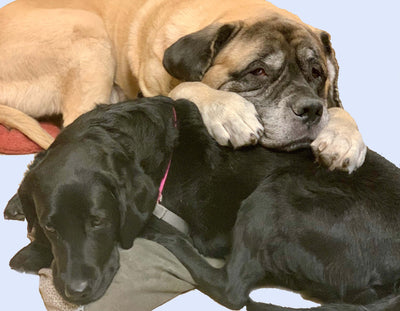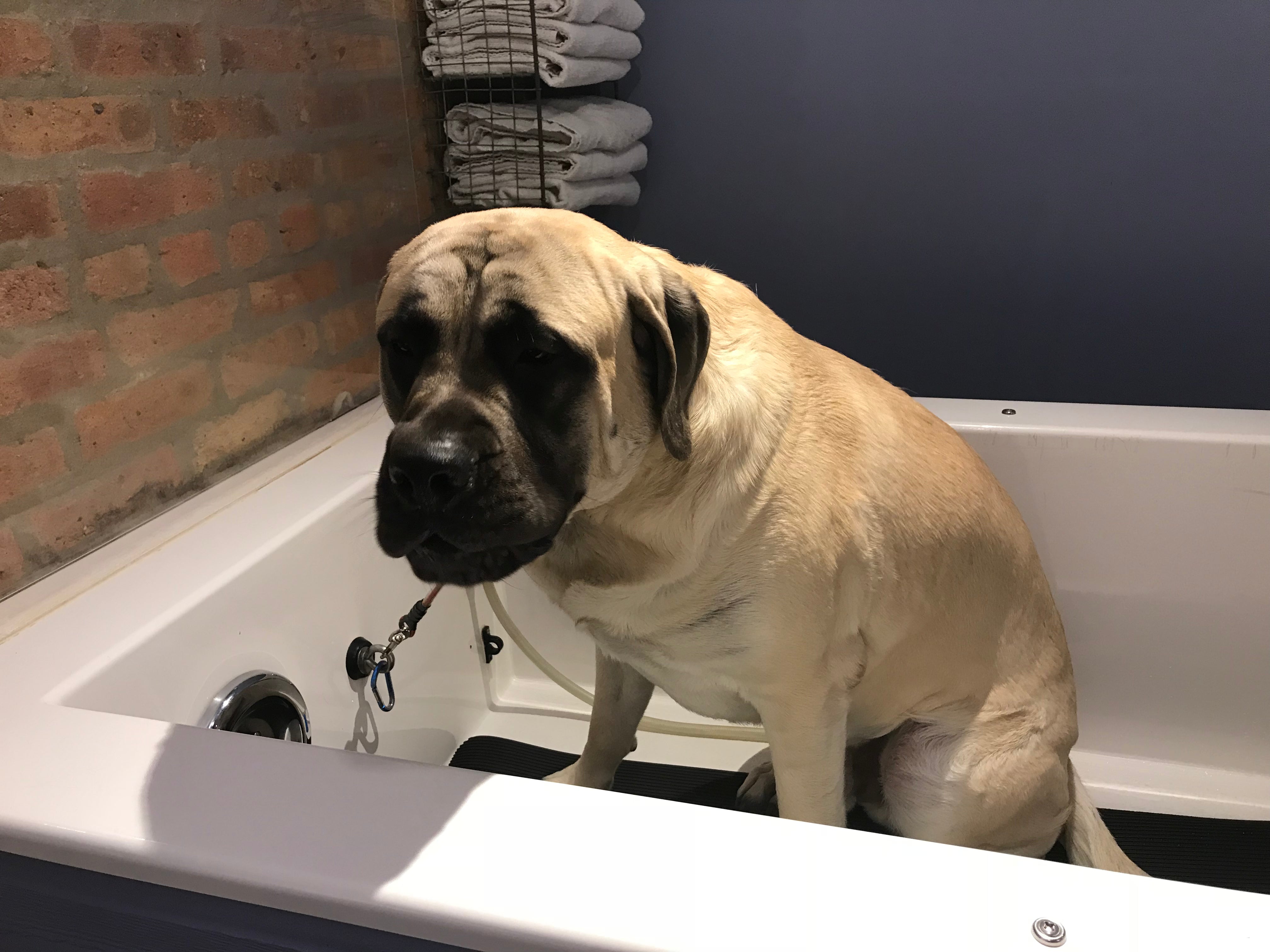Have you ever heard of trigger stacking in dog behavior?
Trigger stacking is an important subject that all groomers should be acquainted with. The definition of trigger stacking is: a phenomenon in which a dog experiences multiple stressful or scary situations within a short time span. In other words, stress inducing experiences (triggers) cause the pet to become nervous or fearful. Take those stressors or triggers and have them occur one after another, adding more and more stress. Trigger stacking is literally stacking triggers right on top of each other, see, it’s easy to learn!
So, for instance, let’s take a look at a typical grooming encounter.
1) The pet is put in the car. Some think it's fun, others only go to "bad" places.
2) They enter the grooming facility and hear other dogs barking. It may be a new facility they are not accustomed to the smell of pheromones left by other scared dogs. A stranger comes over and takes them away from their person.
3) They are put in a cage.
4) They are taken out of the cage by a stranger. Even if they know the person, some would rather stay in the cage.
5) They are bathed, people are touching them all over multiple times.
6) Then drying. Most dogs really dislike this part. It is very loud. They don’t like the feeling of concentrated air hitting them.
7) They may be placed in another cage to await the rest of their groom.
8) They are taken out of the cage by possibly a stranger Again, they may prefer to remain in the cage.
9) They are placed on a table that sometimes rocks a bit and goes up and down in a jerky manner and sometimes very quickly.
10) They are brushed, de-matting is monotonous and can be a painful depending on technique.
11) They are given a haircut or neatened up which again is someone touching every square inch of their body several times.
12) Pads are shaved. Clippers vibrate and make noise.
13) Nails are trimmed/filed. May not be used to feet being held, Don’t like the pressure of the nail being trimmed, Don’t like the sound of the filer.
14) Placed back into a cage.
Stacking adds up little by little

As you can see, grooming can be stressful and difficult for even the best of dogs. Each step of the way can be anxiety producing. Each item can cause stress, so imagine them stacked one on top of another! It is up to the pet professional to be able to interpret the dog’s body language and to know what is stress inducing for that pet. It is rare that a dog will lash out seemingly from nowhere. They were more than likely telecasting the signs but those signs were not being picked up by the groomer. This list encompasses what most dogs experience through grooming.
Temperament with Stress Varies
Each dog, however, handles stress differently (just like people do) and there is no way of knowing how many stressors that dog can handle on that particular day. They may be well rested and content when dropped off and can handle all the steps of grooming with little to no problems. Another may be experiencing a stressful home life, maybe the family is packing for a trip and the dog comes in to the salon already stressed to a fairly high level. That dog may lash out after only a few steps. Even our regulars can have a bad day.
Understanding Body Language
As mentioned before, reading body language is very important. The signs are often subtle, but when you learn what they are you will see them telecasting to the entire room! There are some really great resources for learning the signs of stress, I always recommend Canine Body Language: Photographic Guide by Brenda Aloff. It contains many pictures of dog in different setting and all the signs they are giving are noted and explained. Another excellent resource is www.CattleDogPublishing.com, Dr. Sophia Yin’s site. She was a veterinarian, animal behaviorist, and an expert on low stress handling. There is also a great podcast called Creating Great Grooming Dogs that offers insights on how groomers can lessen the stress of grooming. The podcast creator, Chrissy Neumyer Smith, is a behavior consultant and also teaches a class for groomers on dog behavior. I will mention a few here, but please do check out the other resources.
Signs of Stress
|
Panting w/ a tense face |
Spatula tongue |
|
Whale eye |
Licking lips |
|
Tucked tail |
Cowering |
|
Looking away |
yawning |
Once you can recognize stress in the dogs on your table, you can start to try things that may lessen the stress threshold. For instance, I have one dog who HATES to get his nails done. He will stress about it the whole groom. Now I do his nails first, and you can see him visibly relax afterwards. If I stick to my normal way of doing things, which is nails after the prep work of bathing, brushing and shaving, he stresses through the whole groom and is not anywhere near as cooperative as when I just do them first to “get it over with.” It’s little changes for you but it can make a big difference to the dog.
Animal Handling Has Changed with Evidence Based Animal Behavior Research
I started grooming during the late 80’s and the thought was “show them who’s boss”. We have since learned that doing so lessens their trust in us and makes each encounter more difficult than the last. Keep in mind that working around their fears and trying to lower the stress involved will actually save you time and enhance the relationship with that pet. They will learn that you will understand their signs. By just making some small changes, you can make the difference for that pet. For example, by letting go of a foot, instead of holding on for dear life, shows the dog you got their message. Then tap their foot and give them a chance to shift their weight off that foot before picking it up again. Move on to a different foot or a different activity and then go back to the foot. You will see that they trust you more and soon you will be able to do the whole foot. Always remember the lesson, if you then keep ahold of it in the future, you will have to regain that trust. Yes, it may take a few visits and some time in the beginning, but it will make your job easier for you and also for the pet. I always remind groomers I teach that someone loves the pet on your table, that is someone’s baby.
Treat every pet the way you would want your precious pet handled and imagine the owner watching you while you work. That change in your thinking can change the way you handle the pets you are grooming for the better.
About Lisa
Lisa Herbold, ICMG, MPAe, MGBS, CAH, PGC, FFC, PTI, and author of Pet Health & Safety Guide, likes to meld her knowledge as an educator and groomer with her knowledge as a veterinary technician to better educate groomers on the health needs of pets. Her goal is to improve how groomers are trained to handle health concerns and emergencies, thus making grooming safer for the pet.
Find out More Information with Lisa at:


